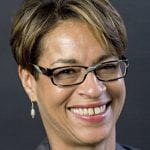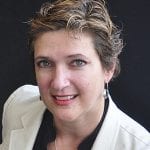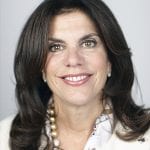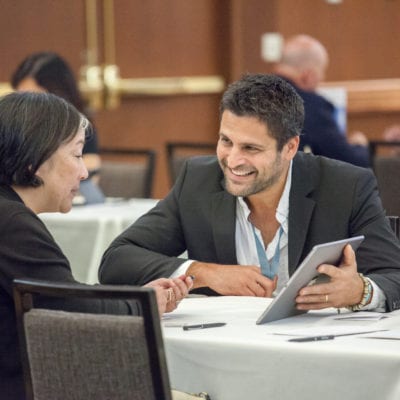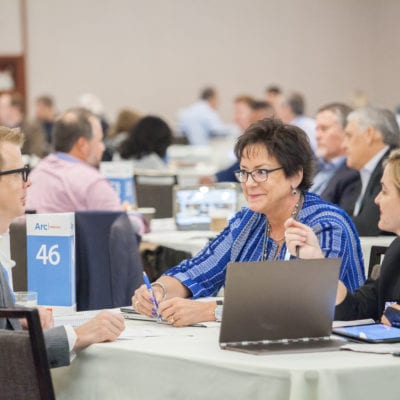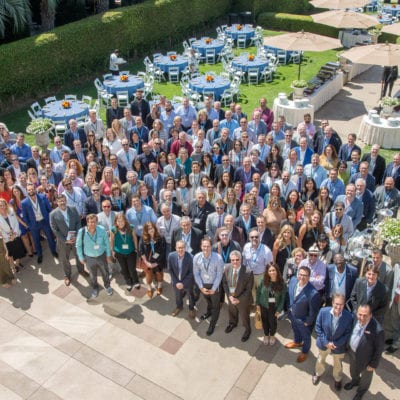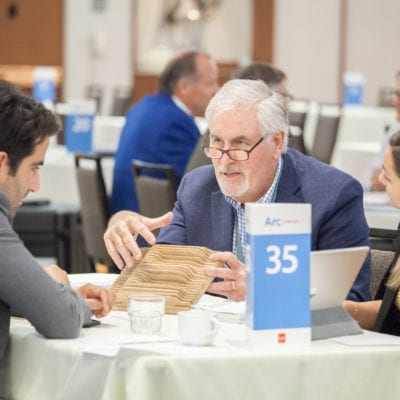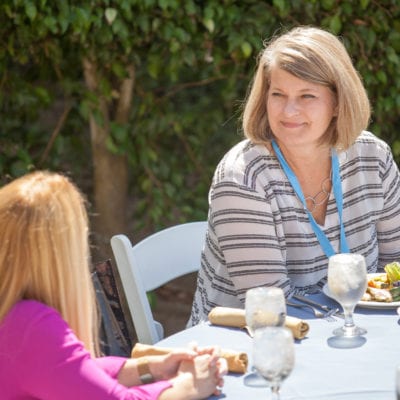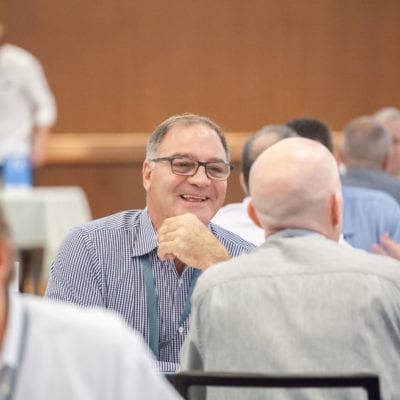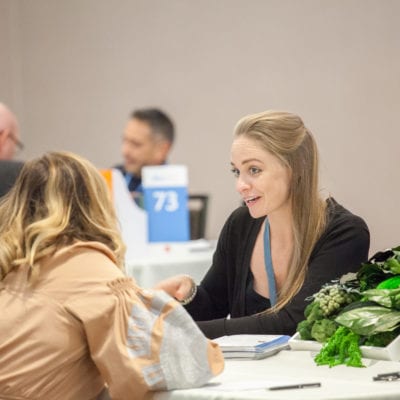Arc Interiors 2018

The Forum for America's leading Interior Architects
September 20-23, 2018
California, USA
Program
THE PROGRAM BELOW IS FROM 2018
Seminar timings and/or content may be varied at our discretion.
- Day 1
- Day 2
- Day 3
- Day 4
Thursday, September 20
Synopsis
The diversity of our profession is important because architects should reflect the world that they design for. We work with communities all over the world, of a very diverse nature. In order to design for these communities, we should represent them. Gabrielle will share her experience as Perkins+Will’s Director of Global Diversity and President of IIDA on an approach (and progress) to address the diversity gap within architecture and interior design.
Biography
Gabrielle oversees Perkins+Will’s Diversity, Inclusion, and Engagement program, which works to support and strengthen a firmwide culture that embraces a diversity of people, colors, creeds, credos, talents, thoughts, and ideas. Her unique role as an award-winning principal and the firm’s Director of Global Diversity enables her to combine her passion for architecture and social justice to effect positive change at a micro and macro level. Gabrielle is regularly sought out around the world for her leadership and expertise in issues of social equity in architecture, including race, ethnicity, gender, sexual orientation, religion, and physical and mental ability. Gabrielle has spent her career focusing on complex and socially significant projects in the US and globally including healthcare and university projects in the Kingdom of Saudi Arabia. Her passion is centered on the planning and management of socially responsible and culturally responsive architectureGabrielle has been a key player in Perkins+Will’s success for nearly three decades. She’s worked in both the New York and Los Angeles offices, and became the first African-American and first woman to rise to the position of Managing Director of the Los Angeles office. Over the course of her career, she has led numerous complex and high-profile projects, including the Ronald Reagan UCLA Medical Center, and one of the largest building projects ever completed for the University of California system. Gabrielle graduated in 1984 from the Rhode Island School of Design with degrees in fine arts and architecture, becoming the second African-American woman in history to earn an architecture degree from that university. In 2014, she was elected by her peers as a Fellow of the American Institute of Architects (AIA), and served on the AIA’s Equity in Architecture Commission. She is a member of the National Organization of Minority Architects (NOMA), a past board member of the Girl Scouts of Greater Los Angeles, and the AIA LA Center for Architecture and Urban Design Los Angeles. Gabrielle now serves as 2018-2019 President of the International Interior Design Association (IIDA).Friday, September 21
Synopsis
Designers specify materials every day. From the paint we select to the furniture we specify, our decisions affect people’s health, the community, and the environment. How do we make sure we’re not having a negative impact? Understanding the evolving body of knowledge about how materials impact the environment, carbon, human health, and wellness is integral to our profession but can be a daunting task. How do we know what to look for or ask for? This session will walk you through some of the resources available today to help make this job easier. You’ll be able to seek out and incorporate materials decisions, design ideas, tools and processes, resulting in better products and materials to use. Because #MaterialsMatter.
Biography
As Chair of Perkins+Will’s firmwide Sustainable Leadership Council, Paula McEvoy assures that sustainable ideas are an integral part of the firm’s projects and practices. She has been instrumental in defining sustainability at Perkins+Will and shaping the firm’s commitment to leadership in sustainable design. Key outcomes from this effort include the development of the ground-breaking Precautionary List and Transparency website, the Sustainability Strategic Plans and the Green Operations Plan. She coordinates sustainability efforts across the international firm’s offices and speaks frequently on sustainable design, construction, business practices and visioning. Paula is a registered Architect and demonstrates an involved, hands-on attitude in all phases of the design and construction process with expertise in the design of healthy, high-performance buildings and communities. Ms. McEvoy is a LEED Fellow and LEED Faculty member. She is also a Fellow of The American Institute of Architects, was the 2016 Chair of the AIA National Committee on the Environment (COTE) and Co-chair of the AIA National Materials Knowledge Group.Saturday, September 22
Synopsis
According to the Center for the Built Environment, acoustics is considered an important attribute in office design. However, in post-occupancy, the number one reason for employee dissatisfaction is speech privacy. Lack of acoustical privacy is a key worker complaint and research shows that if workers are provided with areas where they feel they can control their personal information, they will be more collaborative and productive in an open environment. How do you develop practical design solutions that address a subjective concern like privacy? Acoustical privacy is ultimately an orchestration of many design and building elements working together. What happens if you pull a key piece out? What does each design option “sound” like? This session will provide guidelines on how to understand and define expectations of privacy, the different personas associated with modes of work, tools which can be used to experience proposed workplace design, and to provide a review of the architectural and mechanical components and solutions that address different levels of privacy.
Biography
Cerami has earned a reputation as one of the premier acoustical and technology engineering firms in the country. Under Victoria Cerami’s leadership, the firm has grown to be the largest woman-owned firm working on building design projects globally. The firm has worked with world-class developers and architects on project designs such as the World Trade Center, Museum of Modern Art, Comcast Technology Center, Facebook, Google, Massachusetts General Hospital, and Princeton University. Victoria is passionate about the firm’s role in public outreach, with a focus on mentorship and sponsorship of women. She sits on the Board of ACE (Architecture, Construction, and Engineering), which mentors inner city high school students. The firm sponsors a woman each year entering college to study mechanical engineering in honor of her Father, Vito Cerami. Victoria is also a board member for the New York Building Congress, member of the University of Hartford’s Board of Regents, Co-Chairwoman of the Council of Industry Woman, and past Chairwoman of the University of Hartford’s Institute of Science and Technology Building Initiative Program. Victoria holds a Master’s in Business from MIT’s Sloan School of Business and a Bachelor of Science in Mechanical Engineering from the University of Hartford.Synopsis
From Planning and Design through Manufacturing and Construction, our industry is fuelled by creative, driven, hard-working people, who have a deep sense of passion for their work, and take immense pride when that work is recognized by their clients and peers in the industry. It is this integrity that led Gensler to become a board member for the Be Original Project. We want to ensure the protection of all of our work from plagiarism and counterfeit goods, and hold ourselves and our industry accountable for the conduct and reputation of our peers. Succumbing to the temptation of cheaper alternatives can be overwhelming but fails to respect the great work we all do. That’s not the kind of industry that we want to be, and it’s not the kind of professionals that anyone ever aspires to be when they enter our field.
We need to invest in our people and commit to working with trusted manufacturers that respect the hard work of their competition, regardless of their size. By understanding the benefits of original products, ideas and intellect, we begin to see the impact of those products and ideas on the communities that created them. One of the great virtues of our industry is that our work is about more than ourselves – together we create solutions to the big problems people are facing every day in their workplaces, their communities and even their daily lives. That’s why I’m proud of Gensler’s decision to be a part of the Be Original Project.

